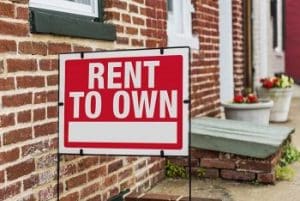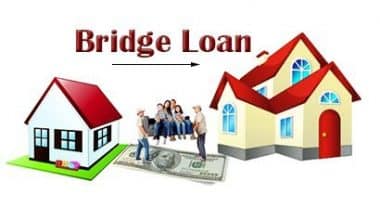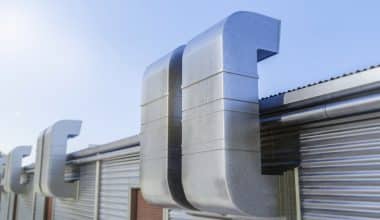If you’re like most property investors, you’ll need a mortgage to finance your new property purchase. Moreover, you must know how to find or for finding rent-to-own properties. As well as rent-to-own commercial properties.
Rent to Own Properties
Here’s an overview of things to look out for and how the rent-to-own properties process works. However, it’s more difficult than renting, and you’ll have to take extra care to protect your interests. Moreover, if you’re seeking to buy a property, this will help you determine whether the deal is a suitable fit for you.
#1. Nonrefundable Fees UpFront
You (the buyer) pay the vendor a one-time, generally nonrefundable, upfront sum known as the option fee, option money, or option consideration in a rent-to-own properties deal. This cost is what provides you the chance to buy the house at a later date. Because there is no standard rate, the option fee is frequently variable. Nonetheless, the cost is normally between 1% and 5% of the purchase price.
#2. Lease-Purchase vs. Lease-Option
It is crucial to remember that numerous forms of rent-to-own properties contracts exist. Although some are more consumer-friendly and flexible than others. Lease-option contracts allow you the right, but not the responsibility, to purchase the property at the end of the lease term. However, if you choose not to purchase the property at the conclusion of the lease. Then the option simply expires, and you are free to walk away with no obligation to pay rent or buy. But, this is not always true with lease-purchase agreements.
It must be a lease-option arrangement to have the choice to buy without the commitment to buy. Although legalese can be difficult to understand, it’s always a good idea to consult with an experienced real estate lawyer. before finalizing anything, so you understand your rights and precisely what you’re stepping into.
#3. Choosing a Purchase Price
Rent-to-own properties contracts should clarify when and how the purchase price of the home is calculated. In some situations, after the contract is signed, you and the vendor will agree on a purchase price. Which is generally more than the current market value. In other cases, the price is established after the lease expires and is dependent on the property’s current market value. However, many purchasers seek to “lock-in” the purchase price, especially in rising-priced markets.
How to Find Rent to Own Properties
The following are the process in finding rent to own properties
#1. Speak with an expert agent: How to Find Rent to Own Properties
The first step in finding rent-to-own properties. An expert buyer’s agent by your side is one of the most valuable resources at your disposal during the house-hunting process. Moreover, you’ll want to choose an agent that has experience in rent-to-own transactions since these agreements might contain a lot of unusual terms and conditions. Although a seller is unlikely to take advantage of you. Besides they want the best conclusion for themselves and aren’t always acting in your best interests, so a buyer’s agent provides added protection against a bad bargain.
#2. Look for a brokerage that offers a rent-to-own option.
The second way in finding rent-to-own properties. You might also work with an agent or agency that specializes in rent-to-own programs to identify properties to lease with the option to purchase.
#3. Contact a vendor: How to Find Rent to Own Properties
The vendors of those properties may be particularly interested in renting. As it provides them with a little extra money each month while both sides work toward a sale.
Finding a rent-to-own properties arrangement.It provides a monthly income in the form of rent from you to a vendor who is having difficulty selling a home. So if you are unable to obtain a typical mortgage, you can live in a property while you improve your credit, hunt for work, or wait for legal concerns to be resolved – whatever your circumstance may be.
#4. Find a reluctant homeowner: How to Find Rent to Own Properties
Likewise, you and your agent might be able to locate a landlord who is searching for a way out. If they want to sell the house they’re now renting out, your rent-to-own offer could be a terrific way for them to do so.
These property owners typically have only one rental property, which they may have commenced renting out since they were unable to sell it. Importantly, you may be able to smooth the bargain by providing to keep the home. And also conduct maintenance while you’re renting – duties that hesitant landlords may despise. In exchange, if all goes well, you’ll have a home to buy at the end of the agreement. one you’ve been caring for and residing in, so you know what you’re getting.
#5. Utilize a specialized portal: How to Find Rent to Own Properties
The next step in finding rent-to-own properties. Is the foreclosure market is one source of potential rent-to-own homes. Homeowners facing foreclosure may be especially receptive to a rent-to-own agreement; however, you cannot enter into a rent-to-own agreement if the house is already in foreclosure. If, on the other hand, the owner is in pre-foreclosure, they can profit from the rent you collect while also securing a path to the eventual sale of the house.
#6. Make contact with your network: How to Find Rent to Own Properties
Last point to finding rent-to-own properties. you never know who in your community is looking to sell a property and would delight to connect with you. Make an effort to contact your friends, neighbors, and other social acquaintances. Let them know you’re considering relocating and see if anyone is interested in a rent-to-own agreement.
Commercial Rent to Own Properties
A commercial rent-to-own properties agreement with a purchase option, also a rent option. It is a type of commercial real estate agreement in which the tenant and the property owner comply that the tenant has the choice to buy the property at the end of a certain rental period. However, the agreement typically stipulates the time frame during which the client has the option to acquire the rented property. Moreover, the parties have reached an agreement on the following points:
- The contract length and the sale price
- Amount of the monthly rent that will be applied to the eventual purchase.
- Who will be in charge of day-to-day property maintenance?
Tenants’ Advantages of Commercial Rent to Own Properties Option
There are various advantages to entering into a commercial rent to own properties arrangement with your landlord as a tenant with a lease option.
- First and foremost, the property will necessitate repairs from time to time. In such circumstances, you may make some creative arrangements and then apply the work’s value against the purchase price.
- Second, the lease option allows you to save up for a deposit without having to give up the property.
- Third, your commercial rent to own properties agreement is valid as long as it is acceptable to the landlord, and as such, you are not required to vacate the property.
- Lastly, the leasing option enables you to repair your credit so that you may qualify for a typical mortgage.
Landlord Advantages of Commercial Rent to Own Properties Option
Any landlord will gain greatly from a lease option. These benefits are as follows:
- Because the tenant wants to one day purchase the property, he will take good care of it.
- Whether or not the tenant-buyer exercises the option, the landlord collects a non-refundable lease option fee.
- The landlord obtains greater monthly payments from the tenant-buyer since a portion of the tenant’s payments goes toward the eventual purchase.
- The tenant-buyer is solely responsible for all repairs and maintenance.
- If the tenant exercises the option and purchases the property, the sales contract is already in place, and the sales charge is cheaper.
Rent to Own Properties Disadvantages
#1. Increased Monthly Payments
One of the most significant disadvantages of renting to own for tenants is the high cost. Most landlords will raise your rent in exchange for allocating a percentage of your monthly payments to your property balance. Although rent remains a better deal than buying in many Northern California towns, according to Zillow data, the higher monthly payments associated with a rent-to-own situation may tilt the scales in the opposite direction.
#2. Exposure to the Owner’s Financials
When a tenant rents a home from a landlord, he gains access to the owner’s money. After all, if the owner fails to make his mortgage payments, the tenant may be evicted by the lender or the prospective owner. Moreover, With a lease, though, a tenant can at least expect to obtain what he pays for: a month of living in the home. Furthermore, Rent-to-own agreements bind the tenant to the owner for a longer period of time. If the owner fails to pay the mortgage, property taxes, or other obligations at any point during the agreement. She may lose her right of ownership and end up removing the tenant’s interest as well.
#3. Risk of Future Financing
Rent-to-own property contracts usually require a tenant to make monthly payments in exchange for a future right to purchase. Notwithstanding, she may be unable to obtain a loan in the future. If a tenant is unable to find financing, she may lose the extra funds she paid and have her right to buy under the agreement revoked.
#4. Market Pricing Danger
The largest disadvantage of rent-to-own property arrangements lies on the landlord’s shoulders. The renter has all of the cards in a lease-purchase option. However, If the market advances and the house’s value rises, the tenant is much more likely to exercise the option and purchase the house at the locked-in, reduced price. In contrast, if the property’s value falls, the renter is considerably more likely to walk away or renegotiate the price. Consequently, landlords lose in either situation if they sell a hot property at a below-market price or keep a property that has lost value.
Why Is It Difficult To Find a Rental?
Rent prices rise as a result of a decrease in the number of new homes available and an increase in the demand for rental homes. This makes it harder for those with average incomes to find housing because fewer people can afford the monthly apartment rent.
Can I Rent if My Credit Score Is 300?
A credit score of 700 or more is generally regarded as good. Credit scores vary from 300 to 850. A renter should have no trouble applying for an apartment as long as they have proof of income, a valid photo ID, and decent credit. However, it can be more challenging for you to rent if your credit score is under 700.
Which Month Has the Lowest Rent?
Rental prices are typically lowest between October and April, especially immediately following the holiday season in December. Because of the bad weather, the start of school, etc., fewer individuals are interested in moving. Consequently, renters often find the best deals between the months of December and March.
How Much Time Does It Take to Rent a House?
First-time tenants might anticipate delays of up to three weeks before being given entry into their new property if all documents are not correctly filled out. In general, first-time renters who follow the rules must wait about a week before they may move into their first rental home.
Why Is Renting Less Preferable To Buying?
Renting, as a whole, offers less security and consistency regarding housing. Minimal personalization: While it’s convenient to have your landlord take care of repairs and maintenance, renting also limits your ability to customize your living area.
Conclusion
Rent-to-own properties are simply real estate agreements in which the tenant and the property owner comply. And the tenant has the choice to buy the property at the end of a certain rental period.
- RENTAL PROPERTIES: Tips for Profitable Rental Properties Investing
- Rent To Own Homes: How To Rent To Own Homes
- Key Money Definition: What is Key Money? (+ Quick Guide)
- RENT TO OWN HOMES: A COMPREHENSIVE GUIDE AND ALL YOU NEED (+ U.S LISTINGS)
- PROPERTY MANAGEMENT: Roles of Property Managers & Firms (+Top Software Picks)






